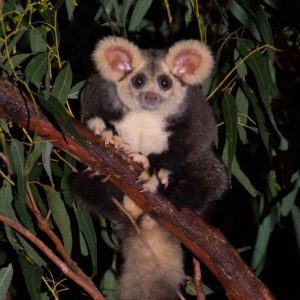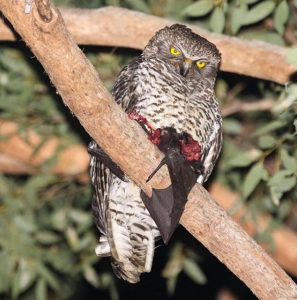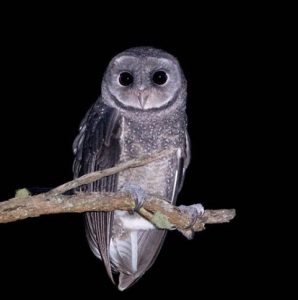Recently, we noticed some wonderful images of nocturnal species being uploaded into the ALA. Obviously we wanted to know more about these wide-eyed creatures and contacted their photographer Josh Bowell for more information.
Josh’s hobby is nocturnal wildlife photography and he started uploading images from his night time trips to the ALA early this year. He also adds images to his Instagram account.

“I hope that my photographs and sightings in the ALA might contribute to conservation efforts in some way”, Josh said.
We were keen to draw out some of Josh’s tips for night time photography, and he was more than willing to share.
“When heading out searching at night, I use an LED torch that can be switched to red light when I spot something. This causes less distress and behavioural changes in the animals. I also use minimal flash and edit out the red-eye,” Josh said.
“It’s also really important to work quickly. I take only a few pictures, and then leave the animal alone.”

The night time backdrop certainly adds a sense of drama to photos and Josh admits that he often witnesses some pretty cool things in the dark.
“Two of the more memorable things I’ve spotted were a risk-taking all white Greater Glider sleeping out in the open while there were owls nearby, and a Masked Owl delivering small mammal prey to its offspring in a hollow. I love witnessing these moments,” Josh said.

Sensitive data in the ALA
Josh was initially reluctant to add some of his images to the ALA, as he didn’t want to give away exact locations and potentially put animals at risk. This is a common concern for people sharing data on platforms like the ALA, and we have processes in place to address these issues.
The ALA’s sensitive data service enables data in sensitive records to be annotated, withheld or locations generalised. In Josh’s case, we suggested some alterations he could make when first logging his sightings so that exact locations cannot be pinpointed by others.
Data may be considered sensitive for conservation (threatened species), biosecurity (pests), or privacy (e.g. private property) reasons. We work with Commonwealth, State and Territory agencies, and with data providers, to maintain lists of species considered sensitive for conservation or biosecurity reasons.
If you’d like to know more, follow these links:
- More information about ALA’s Sensitive Data Service
- View the most recent sightings at Recent Sightings
- If you’d like to share with us how you use the ALA, please contact us.